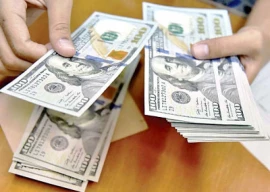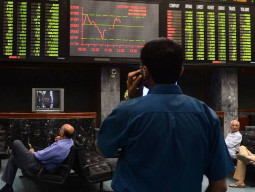
Indeed, from the very beginning of reforms, the Chinese government has adopted a deliberate policy of linking economic development with innovation. What else can explain the sustainable high productivity growth rates in China?
Pakistan has failed when it comes to trade with China
It has resulted in China surpassing Japan in 2010 as the second-largest economy of the world. It is a remarkable achievement for a country that was finding it difficult to feed its population just three decades back.
The Chinese path to the innovation-led growth started with the delinking of its Soviet-style research paradigm from the bureaucratic shackles. In initial years, many commercially-viable projects of public sector research institutions were partially privatised.
Precedents include world-famous Lenovo group and Founder group. University-industry linkages were strengthened. The government supported establishment of science parks, which proved to be a pivot in the innovation-driven economy.
Science parks
At present, there are around 100 such parks throughout the country, where thousands of small technology enterprises are housed. Beijing-based Tsinghua University Science Park needs a special mention here. Established in 1994, this science park can be dubbed a major success story.
Companies based in Tsinghua Park hold an asset base of 50.6 billion renminbi and made an annual profit of 1.1 billion renminbi. Science and technology as well as ICT, biotechnology, material sciences and clean technologies dominate the successful spin-offs from these parks.
The Chinese government remains cognisant of the fact that without a strong base in science, the dream of a high-income developed economy will not be realised.
Logistic, Tech Park to be built for $1.5 billion as part of CPEC
Technology transfer by foreign companies investing in China was made essential. For the listing of technology startups, the Shenzhen Stock Exchange created a Nasdaq-like index called ChiNext.
Science education remains a key front. The number of science students enrolled in Chinese universities annually has risen from 1.3 million in 2002 to 6.1 million in 2012.
International Chinese students at tertiary level have doubled from 0.31 million in 2003 to 0.71 million in 2013, which comprises over 20% of the international students. Majority of these students are enrolled in science and engineering disciplines.
Under various generous incentive schemes of the government, China is witnessing an increase in foreign-qualified returnees. These graduates and PhD holders are finding an attractive working environment from financial and professional perspectives back in China.
Even private sector is grabbing a huge stake in an increasingly innovative economy. The share of businesses in R&D investment makes up three-fourths of the total such expenditure in China.
All these factors have propelled China to the 29th position on the global innovation index in the 2015 report published by Cornell University, INSEAD and World Intellectual Property Organisation.
It is ranked the first most innovative nation among upper middle-income countries. In innovation ranking, China has crossed a number of developed countries, which reflects its leadership vision for the ultimate path and place for their country.
Let’s look at Pakistan
It feels good to read about the achievements of our all-weather friend. Let us take a look at where we stand compared to China.
New learning: NUST establishes Chinese centre
On the global innovation index, Pakistan is ranked 131st among 141 nations. In South Asia, we are just ahead of Nepal. Owing to our security perception, Pakistani international students are on the decline, with refusal to their visa requests on the rise.
Most of the basic and applied research is done in the public sector research institutions with minimum industrial linkages. The private sector is not even investing in experimental development.
A case in point is domestic auto manufacturing, where the deletion level is still low despite decades of government protection. Science parks remain an unheard phenomenon at the policy and academic levels.
A little self-introspection is required here. What a country at the bottom of innovation offers to a technological dragon high on innovation? May be not much, in terms of skill set, ecosystem and purchasing power.
The China-Pakistan Economic Corridor (CPEC) may be a great connectivity happening in Pakistan. However, for optimising returns, Pakistan needs to take a leaf from the Chinese reforms of 1980s. It needs to develop a skill base grounded in science and technology. More engineering scholarships have to be sought from the Chinese universities.
Technology transfer should be the mantra in projects under the CPEC. There is no short cut on the path of sustainable productivity growth. The Chinese dragon has proved it through its hard-earned position. The road for Pakistan will not be much different.
The writer is a director in a research institute in Islamabad and was previously working as an entrepreneur in China
Published in The Express Tribune, July 25th, 2016.
Like Business on Facebook, follow @TribuneBiz on Twitter to stay informed and join in the conversation.




1736599343-0/fizza-(8)1736599343-0-165x106.webp)






1736508423-0/Express-Tribune---News-Desk-(9)1736508423-0-270x192.webp)

1736495887-0/sidra--(63)1736495887-0-270x192.webp)









COMMENTS (1)
Comments are moderated and generally will be posted if they are on-topic and not abusive.
For more information, please see our Comments FAQ